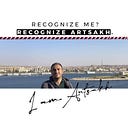Oral tradition: c. 9th century CE
The Armenian national folk epic "David of Sassoun" embodies the spirit of the Armenian people in their long-standing struggle for freedom from oppression and invasion. The epic portrays the Armenian heroes as the nation's protectors against all attempts by foreign powers to subjugate their people. Sassoun, a holy site that stands in for both the heroes' homes and all of Armenia, serves as the epic's focal point.
Although "David of Sasoun" has no known author, it was first published in 1874 after being passed down orally for more than a thousand years.
By finding a Moush villager who would recite the epic to him, the priest and ethnographer Garegin Srvandztiants became the first to record it.
The fact that the epic was recited orally for more than a thousand years before it was first recorded adds to its mystique. Despite the epic's absence from classical Armenian literature, it serves as a genuine expression of Armenian culture.
The Armenian Genocide of 1915 put an end to the oral tradition of retelling David of Sassoun's epic, which had been passed down orally for a considerable amount of time before. The Genocide shattered the oral tradition of the epic because those who could memorize it were forced to leave their homes permanently.
David of Sassoun's a millennium-long history (9th–19th c. ) encompasses remarkable occurrences in Armenian history. The epic, which is full of valiant characters who triumph over many difficulties, came to be seen as an accurate representation of the Armenian worldview that tied the Armenians to a specific location and captured their identity as a people who were always defending their beliefs and homeland. Due to their constant willingness to give their lives in order to preserve their way of life, the heroes epitomize the highest ideals of the Armenian people. But they have flaws too, and when they violate an oath, they suffer the consequences.
Four cycles of four generations from the same family make up the epic: Sanasar and Baghdasar, Lion Mher, David, and Little Mher. Each generation's heroes engage in valiant deeds and confront comparable obstacles that they must overcome in order to assume their rightful place in society. Sanasar and Baghdasar are created by the gods and found Sassoun. Sanasar is endowed with extraordinary strength, which he uses to combat anyone attempting to invade his territory. He must also establish himself as a deserving heir to his father, as must his son Lion Mher, who was given that name because he killed a lion with just his hands. The epic's most well-known hero is David, the son of Lion Mher. He is born just as his parents pass away, so he grows up as an orphan. Because it is the one that is most frequently included in oral recitations and is the longest and most complex of all the cycles, the cycle of David is what gives the entire epic its name. Little Mher, David's son, must also battle injustice in the world. In the epic, he doesn't pass away; instead, he waits for the day when all of the world's sin will be removed, at which point he will succeed Sassoun as the legitimate heir.
In Yerevan in 1939, the "Jubilee Edition," which is the authorized version of the epic, was released. A small group of academics compared the various versions of the epic that are still in existence and created this critical edition. This "Jubilee Edition" was first translated into English by Artin Shalian in 1964, and then into other languages. The various epic versions that were left out of the critical edition have not yet been fully analyzed.
The epic is influenced by the cultural and religious traditions of Armenia, which share a language and literature. The heroes follow their Christian faith, which has been practiced by Armenians since the fourth century AD. The epic also reflects the earlier pre-Christian religions of the Armenians in addition to numerous examples of Christianity woven into the narrative. The heroes have a strong connection to the life-giving properties of water and are reminiscent of early Armenian deities like the thunder god Vahakn.
In order to maintain their language, culture, and religion and to stay connected to their ancestors, Armenians continue to use the ancient epic "David of Sassoun" to do so.
